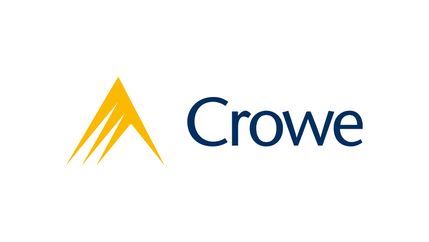Buy-to-let property investments
Whether you have a single property or a large portfolio, with direct ownership the tax treatment is generally the same. The following are the main taxes that affect buy-to-lets.
Any rental income after most expenses will be charged to income tax at your marginal rate.
With the rate of income tax as high as 45%, or even 60% where your personal allowance is abated, you should aim to ensure that all personal allowances and lower rate bands of tax are used in full.
Any losses arising from the rented property must be carried forward and offset against any future profits arising from your rental business and cannot be offset against other income.
The ownership structure is important. It is possible to own property jointly or in partnership with other family members. This means that income can be shared to minimise tax rates.
As a buy-to-let landlord, many expenses incurred while letting your property are allowable for tax purposes.
Landlords can deduct the costs incurred in purchasing replacement furnishings, including white goods when calculating their taxable profit.
Relief for finance costs incurred on residential properties, such as interest and mortgage costs, are restricted to the basic rate of income tax of 20%. These rules do not apply to a property qualifying as a furnished holiday let, however from 6 April 2025 this will change as the furnished holiday letting regime is being abolished. Furnished holiday lets will be treated in line with other residential property lets.
Where the property is a qualifying furnished holiday let (up to 5 April 2025) or owned by a company, rather than an individual, finance costs will be allowable in full.
The sale of a residential investment property is usually charged to Capital Gains Tax (CGT) at 18% or 24%. CGT rates on the sale of other assets are normally 10% or 20%. The higher rate of CGT reduced from 28% to 24% with effect from 6 April 2024.
Each person is entitled to an annual exemption, which for the 2024/25 tax year of £3,000. This was reduced from £6,000 in 2023/24.
Qualifying for Business Asset Disposal Relief (formerly known as Entrepreneurs’ Relief) by making the property a business asset can secure a lower 10 per cent rate of tax on a capital gain. This usually only applies to furnished holiday lets or very large property portfolios. HMRC must be satisfied that you are genuinely running a trading business rather than simply collecting rent for this to apply.
From 6 April 2025, as the furnished holiday lettings regime is being abolished, disposals of properties that previously qualified as furnished holiday lets will no longer qualify for Business Asset Disposal Relief.
Inheritance Tax (IHT) reliefs on investment property are limited. However, there are some simple steps which may help reduce the tax burden.
IHT is charged on assets in your estate at 40% over and above the nil rate band, currently £325,000. This band has not kept pace with inflation or the increase in property prices and has been in place since 2009. It is expected to be frozen at this level to 2028, bringing more assets into the charge to IHT.
An additional “residence” nil rate band of £175,000 was introduced in April 2017. This applies to properties that have been your main residence at some point and which are left to one or more direct descendants on death. This does, however, gradually reduce for an estate worth more than £2 million at a rate of £1 for every £2 that the estate is worth more than the £2 million threshold.
Inheritance Tax Planning – gifts
One way of reducing IHT is minimising the value of property in your estate. To work properly, not only does this mean gifting the capital asset so that you are unable to enjoy it, but also the entitlement to any income generated.
Any gift of property you make will fall out of your estate for IHT purposes provided you survive for seven years from the date of the gift. Reduced rates can apply from four years.
It is important to note that CGT charges can arise to the donor on a gift of property to another person, other than on gifts between spouses and civil partners.
Landlord tax on furnished holiday lets
In the Spring Budget 2024 it was announced that the furnished holiday letting regime will be abolished from April 2025.
Until April 2025, furnished holiday lets, continue to be treated as business assets and attract some preferential tax reliefs which are discussed further below. These tax reliefs will not apply once the furnished holiday letting regime is abolished.
To qualify as a furnished holiday let the property must meet specific criteria. Essentially, they must be let on a commercial basis, for example, the property must:
- available for letting for at least 210 days of the year
- let for at least 105 days
- continuous periods of over 31 days are excluded
Income Tax
Most of the Income Tax benefits have been removed from furnished holiday lettings in recent years, and they are now charged to income tax in much the same way as other rental properties. As mentioned above, the loan interest relief restrictions do not apply for furnished holiday let businesses.
Capital Gains Tax and Inheritance Tax
Significant CGT and IHT savings can be made if the furnished holiday let conditions are met.
The property could qualify as a business asset for Business Asset Disposal Relief, meaning a capital gain on sale could be taxed at a reduced rate of 10%, rather than 24% (28% before the reduction in April 2024).
Qualifying as a business asset also has benefits for IHT. Business assets may qualify for 100% Business Relief (formerly known as Business Property Relief or BPR) which means that no liability to IHT arises on the property. This also applies to lifetime gifts of these assets, and the property could be settled on a discretionary trust to be protected for future generations with no charge to IHT.
The income could then be used as a tax-efficient way of paying grandchildren’s school fees. The transfer can generate a charge to CGT, but in many circumstances, any gain can be held over until the eventual sale.
It should be noted that it is difficult for holiday-letting businesses to qualify for Business Relief. HMRC pays close attention to the services that are provided to establish whether a genuine business is being run and several cases have lost in the courts. The more additional facilities and services that can be provided to align the business more closely with that of a hotel i.e., over and above those which would be expected of a landlord, the better the chances of a successful claim.
Second homes
Most people know that the sale of their home is exempt from CGT, but what is less commonly known is that if you own two properties and live in both, the exemption does not automatically extend to the second home. A common misconception is that married couples can have an exemption each, which is not the case.
Income Tax
Property income on your home can, in some circumstances, benefit from the favourable rules around “rent-a-room relief”. This relief exempts up to £7,500 of rental income from income tax where an individual is in receipt of rent in respect of accommodation which is furnished and part of a UK residence which is the individual’s only or main residence for all or part of the period. If more than one person is entitled to receive the rent, the limit is reduced to £3,750 each.
However, it does not normally apply to second homes, and may not be the same property as can be chosen for capital gains tax purposes (see below).
Where “rent-a-room relief” does not apply, it may be possible to claim the property allowance which covers miscellaneous income from property of up to £1,000 per tax year.
Capital Gains Tax
The CGT exemption on your main residence is known as Private Residence Relief (PRR).
If you are a UK resident and have two or more homes, it is possible to nominate one of your properties to be your main home and it would then qualify for relief. This would generally be the property with the highest increase in value.
The rules for PRR are complex, there are separate rules if one of the properties you own is overseas, or you are a non-UK resident but spend a significant amount of time in the UK.
Inheritance Tax
The value of a second home forms part of your estate for IHT. Complex planning arrangements, using trust structures and debt arrangements, were introduced to mitigate IHT on family homes. Most of these planning opportunities have now been removed by HMRC, although there are more opportunities with second homes.
If the property is gifted, but the donor still wants to use the property, such as for a weekend retreat, this would impact IHT relief due to the reservation of benefits rule. The simplest way of mitigating this would be for the donor to pay full market rent for the use of the property. The income would be taxed on the recipient after expenses. The rental payments would also help to reduce the value of the estate of the donor.
Shared ownership allows you to give away part of the value of the property. However, care must be taken to ensure that an undivided share of the whole property is given away rather than specific parts, as this will negate the tax saving. Similarly, all associated outgoings on the property must be shared equally.
Ownership structure of your property investments
There are various ways to structure ownership of your property investments to mitigate your tax liability. The main ones are:
- direct ownership
- joint venture
- partnership
- limited company
Direct ownership, joint ventures and partnerships
The tax position for direct ownership, joint ventures and partnerships is very similar. In each case, profits are taxed at your marginal rate and capital gains charged on sale. The difference with a partnership is that there is the opportunity to utilise the personal allowances and lower rate bands of all partners, who can be other family members.
Limited companies
Holding property within a limited company can help to save tax as the rate of corporation tax is currently up to 25%, which is below the higher rates of income tax. Whether this is beneficial largely depends on whether the income needs to then be drawn out of the company. If this is the case, there is likely to be a double tax charge, removing some of the saving.
As with partnerships, it is possible to bring other lower earning family members in as shareholders. These arrangements are commonly known as family investment companies. Provided the shareholdings are structured correctly, dividends can be paid to utilise the dividend allowance and lower rate tax bands of the shareholders and extract profits efficiently.
This can often assist families with the funding of university fees, or first homes for young adult children.
There can also be significant IHT savings as the value of property or capital invested in the company is passed to other family members when they become shareholders in the company.
A double tax charge can also arise when properties are sold, as the gain is charged within the company and then tax may be due on the distribution to shareholders. This type of structure is not always beneficial for those requiring an income stream which would be taxed at higher rates or with the prospect of an impending sale.
Company ownership can be advantageous for the most part where it is not necessary to extract all the profits. If profits and gains are to be retained for investment or paying down debt, or to be protected for future generations, then they can be an extremely tax efficient way of owning property.
This also depends on whether the property owned is a higher value residential property. The consequences of this are covered later in this guide.
Stamp Duty Land Tax
Stamp Duty Land Tax (SDLT) is ordinarily due on all residential property purchases over £125,000, although the limit has been temporarily extended to £250,000 until 31 March 2025.
For purchases of second and additional properties a further 5% is added to existing rates. This applies to property purchases over £40,000.
The additional 5% will not be charged where the purchase is replacing your main residence. The transaction must occur on the same day (or before in certain circumstances), otherwise, SDLT must be paid and reclaimed once the original property is sold.
There is a 36-month window in which to do this. Trusts and companies will pay the additional 5% regardless of the number of properties they own.
Non-residents pay a further 2% surcharge on the purchase of residential property, and there are specific rules to determine the residence of the purchaser (whether an individual or corporate).
The current rates of residential SDLT are shown below (3% surcharged rates shown in bold), however, there are reliefs which should always be considered such as:
- Mixed-use purchases where the non-residential rates of SDLT can apply to the purchase involving commercial property or farmland
- A claim to non-residential rates when buying 6 or more dwelling houses in a transaction
- Before its abolition on 1 June 2024, multiple dwellings relief can reduce SDLT when buying more than one dwelling in a single transaction
The current rates of residential SDLT are shown below (surcharged rates shown in bold):
| Value of property | Residential (until 31 March 2025) | Residential (from 1 April 2025) |
|---|---|---|
| £1 - £125,00 | Nil (3%) | Nil (3%) |
| £125,001-£250,000 | Nil (3%) | 2% (5%) |
| 3500,001-£925,000 | 5% (8%) | 5% (8%) |
| £925,001-£1.5M | 10% (13%) | 10% (13%) |
| Above £1.5M | 12% (15%) | 12% (15%) |
Higher-value residential property
Annual charges apply on high-value residential property, owned by a non-natural person, which includes companies. These charges, which apply to properties valued at over £500,000, start at a rate of £4,150 per year in 2023/24 and are intended to encourage investors to de-envelope and bring the property back into the ordinary SDLT regime.
To discourage enveloping further, the rate of SDLT for properties worth over £500,000 bought by a non-natural person, was set at 15%. Many exemptions are available against these additional charges including those properties let out commercially, but the exemptions must be claimed each year. Due to these exemptions, it is common for most property rental companies to file an ATED Return each year but do not pay an ATED charge.
The Annual Tax on Enveloped Dwellings (ATED) rates from 1 April 2024 to 31 March 2025 are outlined below.
| Residential property value | 2024/25 |
|---|---|
| £500,000 –£1 million | £4,400 |
| £1 – £2 million | £9,000 |
| £2 – £5 million | £30,550 |
| £5 – £10 million | £71,500 |
| £10 – £20 million | £143,550 |
| Above £20 million | £287,500 |
Help is available
How a property investment is structured can be one of the key factors in determining the return. Crowe's team has extensive experience working with investors from the UK and overseas to advise on how best to invest, hold and dispose of UK real estate.
For more information on the issues outlined in this guide or advice on your individual circumstances please get in touch with your usual Crowe contact.
Need more advice? Find your local ARLA Propertymark Protected letting agent

Propertymark Protected agents can value the potential rental yield for your property, undertake referencing, tenancy agreements, deposit protection, maintenance, inventories and ensure you're compliant with the law. By using a Propertymark member you are guaranteed to be consulting with a professional agent who will give you up-to-date advice and guidance.




